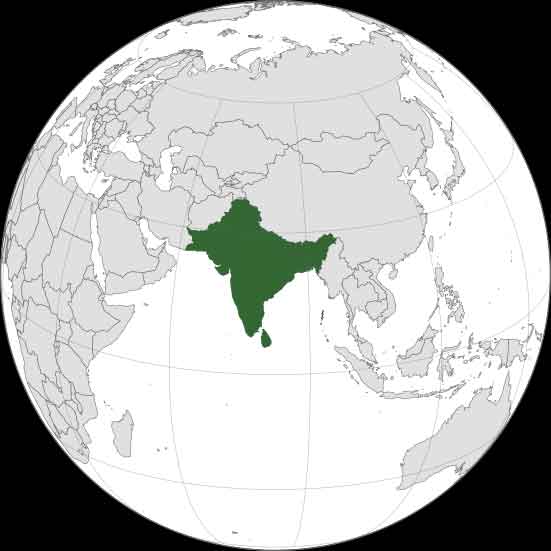Written by Tridivesh Singh Maini & Karan Bidani

Introduction
Remittances play an important role in the economic growth of Lower and Middle Income Countries (LMIC). South Asia is considered to be the largest recipient of remittances in the world.
More than One-Fifth of the global remittances between 2015-2019 came to South Asia (India received close to USD 360 billion in during this period). Remittances account for an average of more than 10 per cent of the Gross Domestic Product (GDP) of South Asian countries. It would be pertinent to point out that with the exception of Afghanistan and Maldives, remittances to South Asian countries exceed the Foreign Direct Investment (FDI) or any aid, that these countries receive from their respective donors (in 2019, remittance flows to LMIC’s exceeded FDI).
If one were to examine remittances as a part of the overall Gross Domestic Product (GDP) in the South Asian region, Nepal is right on top. In 2019 and 2020, remittances accounted for more than a quarter of the country’s GDP. Sri Lanka is second with remittances accounting for 8.3% of its GDP, Pakistan is third with 7.1% and Bangladesh is fourth with 6.2%, followed by India (2.9%), Bhutan (1.8%) and Maldives (0.1%).
Most of the remittances flowing into the region come from GCC nations (Bahrain, Kuwait, Oman, Qatar, Saudi Arabia and UAE). In the aftermath of the oil boom in the 1970’s there has been a steady rise in the immigration of blue collared workers from South Asia to the Gulf (in recent years, GCC countries have also become an important destination for South Asian professionals as well). After the Gulf, US is the second largest contributor to remittances to South Asia, followed by the UK, European Union, Canada and Australia.
Impact of covid 19 on remittances to South Asia
The World Bank had forecasted that remittances to LMIC countries would drop (in 2019, LMIC countries had received 548 Billion USD) and that remittances to South Asia would fall over 20% percent, as a result of Covid 19. There was a dip in remittances to LMIC countries in 2020 (they received 540 Billion USD), but it was negligible.
The pandemic did result in a large chunk of blue collared workers from the Gulf returning home. There is no doubt, that South Asian countries witnessed a dip around the second quarter of 2020, but all countries recorded growth in terms of the remittances by the end of the year 2020. The growth in remittances to Bangladesh was 18.6 percent, Pakistan saw a growth of 17.6 percent, Nepal saw 6.7 per cent growth in the first half of fiscal year 2020-21 and Bhutan had a 200 per cent year-on-year increase for the whole of 2020 (apart from India and Maldives all other nations in the region saw increase in remittance inflows in the year 2020). As mentioned earlier, these figures defy the early estimates which had predicted a significant dip in remittances. As a result of receiving higher than anticipated remittances, the GDP estimates for Pakistan, Bangladesh and Nepal for the year 2021 have been revised to 1.3%, 3.6% and 2.7%.
The increase in remittances, to countries discussed above, has been attributed to the migrants switching to more formal networks of transferring money back to their home country. Travel restrictions compelled migrants, from these countries, to use official channels in transferring money, which led to a significant rise in the inflows of remittances. In 2021, there could thus actually be a possible drop in remittances (more so after the second wave of covid19, and the recent travel restrictions imposed by many countries including the Gulf on travelers from South Asia).
Conclusion
In conclusion, given the unpredictable trajectory of the covid19 pandemic, and the impact which it is likely to have on international travel and the economies of different countries it is tough to predict the trajectory of remittances in the near future. Apart from this, a number of GCC countries have in recent years (even before covid19) introduced policies which seek to increase the hiring of locals, as a result the number of workers blue collared migrating from India had witnessed a significant drop from 2015 itself. In addition to this, it remains to be seen whether remittances from other western countries are likely to reduce as a result of the economic impact of covid19.
It is important, for South Asian countries to work collectively under the umbrella of SAARC and other platforms to successfully adapt to the changing global economic landscape in the aftermath of covid19, and specifically examine strategies to deal with a possible drop in remittances. Given the common challenges, especially economic, which South Asia is likely to face as a result of the pandemic, regional cooperation can not just be a mere slogan, but it needs to be translated into a reality.
Tridivesh Singh Maini is a New Delhi based Policy Analyst associated with The OP Jindal Global University, Sonipat, India.
Karan Bidani is Research Associate at Citizens Foundation for Policy Solutions, New Delhi.
GET COUNTERCURRENTS DAILY NEWSLETTER STRAIGHT TO YOUR INBOX
















































